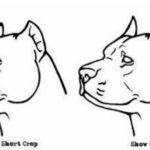Can Dogs Eat Wheatgrass
Dogs are known to have a very specific diet that consists of meat and other animal products, but some pet owners are curious about whether dogs can eat wheatgrass. This is a common question among dog owners who want to ensure that their furry friends have a healthy and balanced diet. In this article, we will explore the topic in detail and answer the question “Can dogs eat wheatgrass?”.
What is Wheatgrass?
Wheatgrass is a type of grass that is commonly grown indoors or outdoors. It has gained popularity in recent years as a health supplement due to its high nutrient content, including vitamins A, C, E, and K, iron, calcium, magnesium, and amino acids. Many people consume wheatgrass in the form of juice or powder for its purported health benefits.
Can Dogs Eat Wheatgrass?
The short answer is yes, dogs can eat wheatgrass. In fact, some dog food manufacturers even include wheatgrass in their products due to its nutritional value. However, there are some things to consider before feeding your dog wheatgrass.
Firstly, it’s important to note that dogs are carnivores and require a diet that is primarily made up of meat. While wheatgrass can provide some additional nutrients for your dog, it should not replace any essential nutrients found in their regular food.
Secondly, while wheatgrass is generally safe for dogs to consume in small amounts, it can cause digestive issues if consumed in large quantities. Some dogs may experience vomiting or diarrhea after consuming too much wheatgrass.
Thirdly, if you decide to give your dog wheatgrass, it’s important to ensure that it’s organic and free from pesticides or other harmful chemicals. Non-organic wheatgrass may contain harmful substances that could be harmful to your dog’s health.
Benefits of Wheatgrass for Dogs
Although dogs do not need vegetables or grains like humans do as they cannot break down plant-based nutrients as efficiently as humans can due to their digestive system, wheatgrass can still have some potential benefits for them.
Wheatgrass is high in fiber which can help regulate digestion and prevent constipation. It also contains chlorophyll, which has anti-inflammatory properties that can reduce inflammation in the body. Additionally, wheatgrass is a good source of antioxidants, which can help protect your dog’s cells from damage caused by free radicals.
How to Feed Your Dog Wheatgrass
If you decide to feed your dog wheatgrass, it’s important to do so in moderation. You should start with small amounts and gradually increase the amount over time. You can add chopped or pureed wheatgrass to your dog’s food or offer it as a treat.
It’s important to monitor your dog after feeding them wheatgrass for any signs of digestive issues or allergic reactions. If your dog experiences vomiting, diarrhea, or other symptoms, stop feeding them wheatgrass and consult with your veterinarian.
Conclusion
In conclusion, while dogs can eat wheatgrass and it does contain some beneficial nutrients, it should not replace any essential nutrients found in their regular food. It’s important to feed your dog wheatgrass in moderation and ensure that it’s organic and free from harmful chemicals. As always, if you’re unsure about whether to give your dog a certain food or supplement, consult with your veterinarian first.
So there you have it – the answer to the question “Can dogs eat wheatgrass?”. While it’s generally safe for dogs to consume in small amounts, it’s important to be mindful of how much they’re eating and monitor for any adverse reactions. With proper care and attention, you can provide your furry friend with a healthy and balanced diet that includes a variety of nutritious foods.



